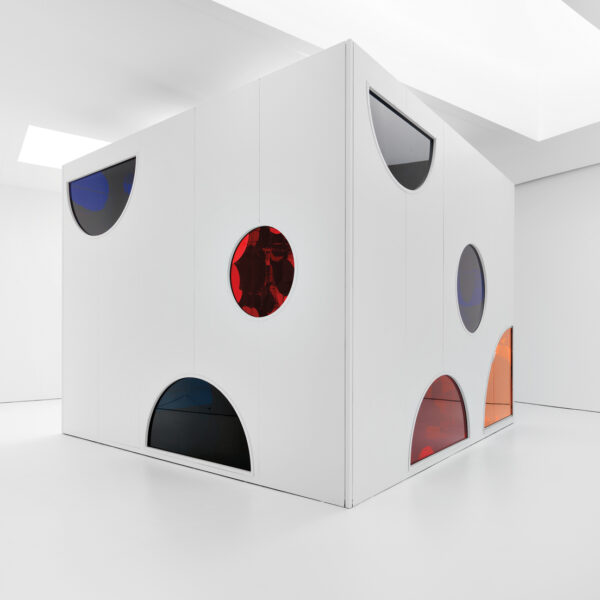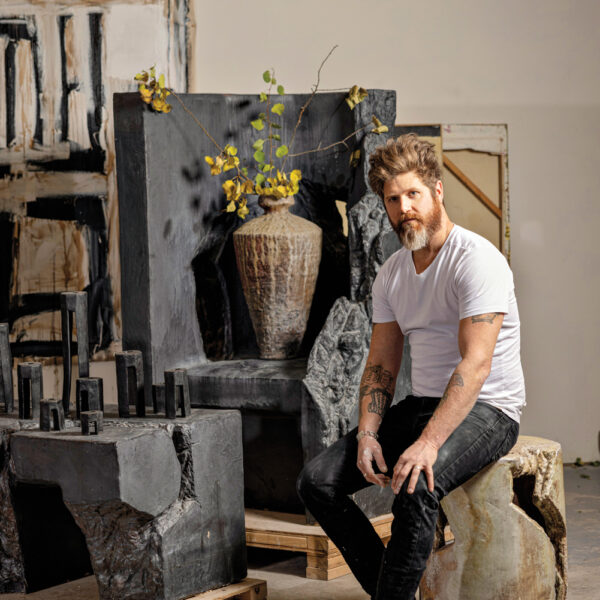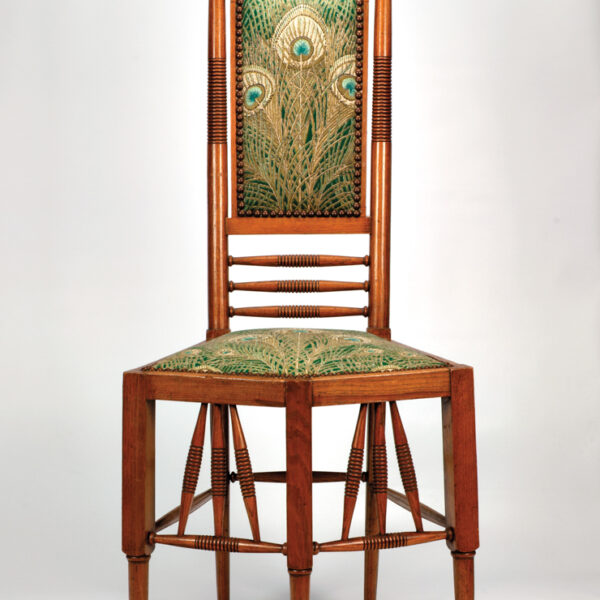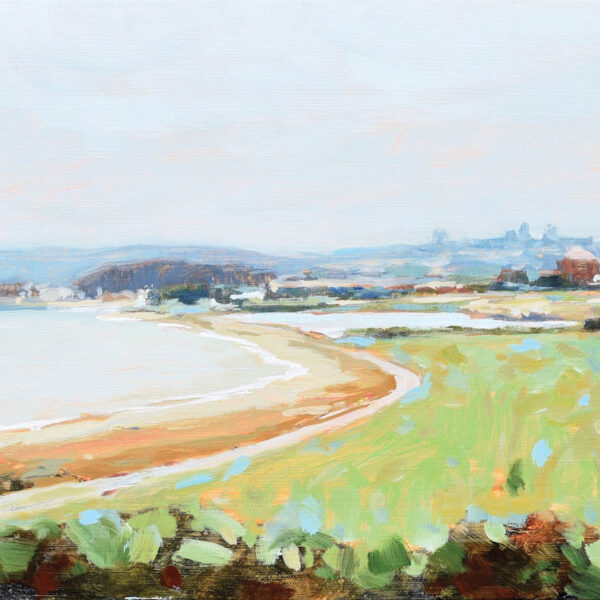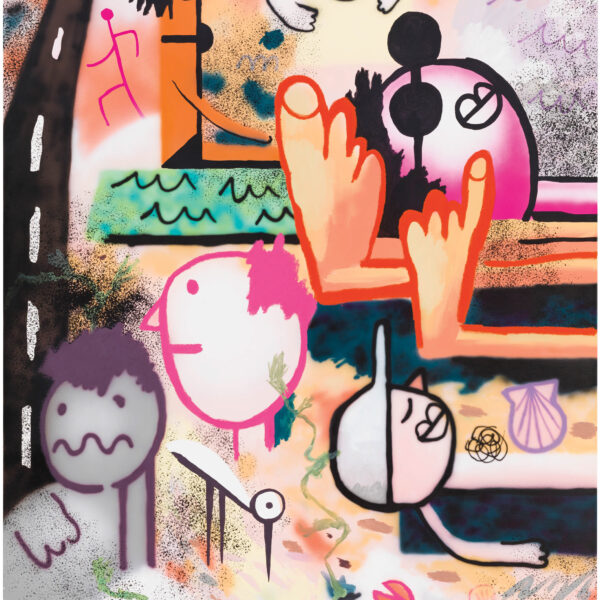
Teresa Booth Brown uses collage and paint to create color artwork.
If you recognize a detail in one of Teresa Booth Brown’s pieces, it’s probably because you once spotted it while flipping through a magazine. Familiar images could be anything: the tiered skirt of a flouncy dress, a segment of barcode, or pieces of a landscape or an interior. These bits of glossy inspiration are assembled into collages that serve as the underpinning of her artworks. The mixed-media pieces on wood panels create a surprising experience for the viewer through a deft exploration of color, geometry and pictures from the zeitgeist.
“When you put previously unrelated things together, magic happens,” says Brown, who uses the term “collage intervention,” to describe this moment of alchemy. The artist, who splits her time between Aspen and Boulder, consistently finds imagery for her paintings in magazines. For her works on paper, she also uses pieces of book pages, flash cards and foreign currency. Of the latter, the artist says she often replaces the most familiar parts of money (a portrait of a dignitary or numbers) with abstract imagery to make less-noticeable borders and graphics more prominent.

A detail of Brown's work reveals a collage of magazine images.

A detail of Brown's work reveals a collage of magazine images.
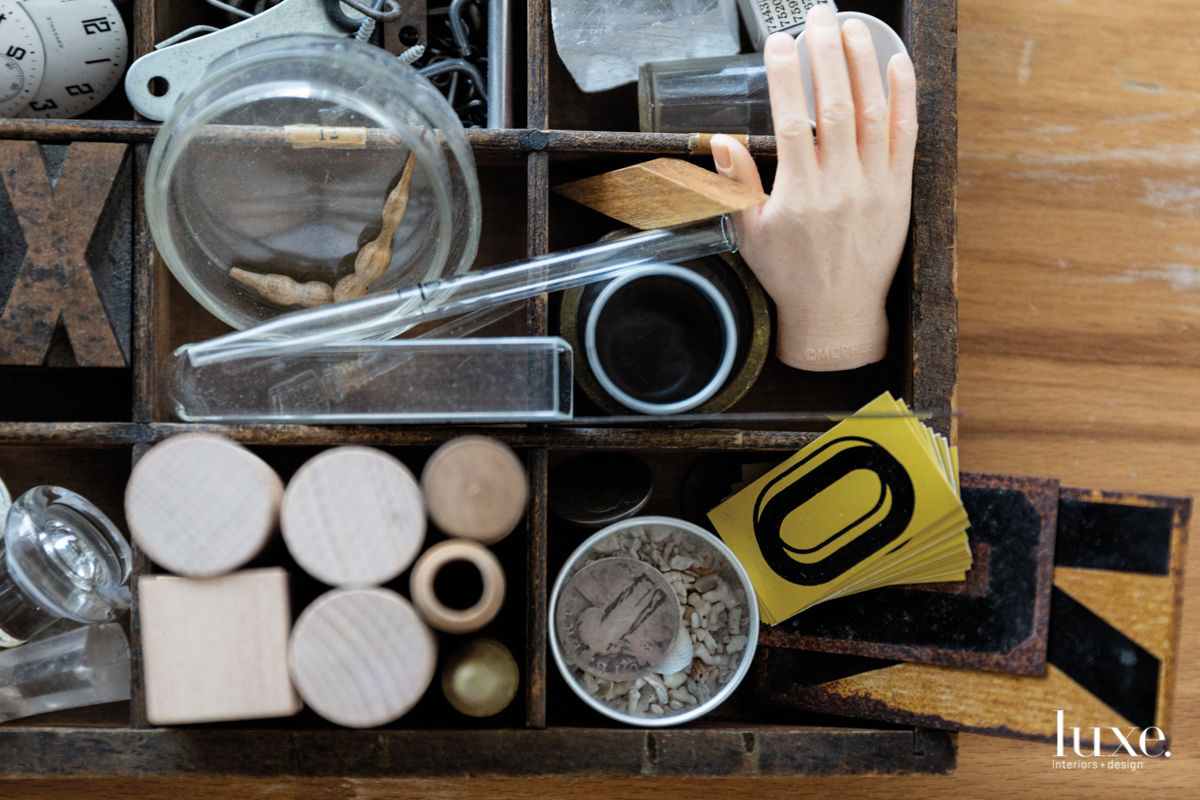
Bits of ephemera provide art materials and inspiration.

Bits of ephemera provide art materials and inspiration.
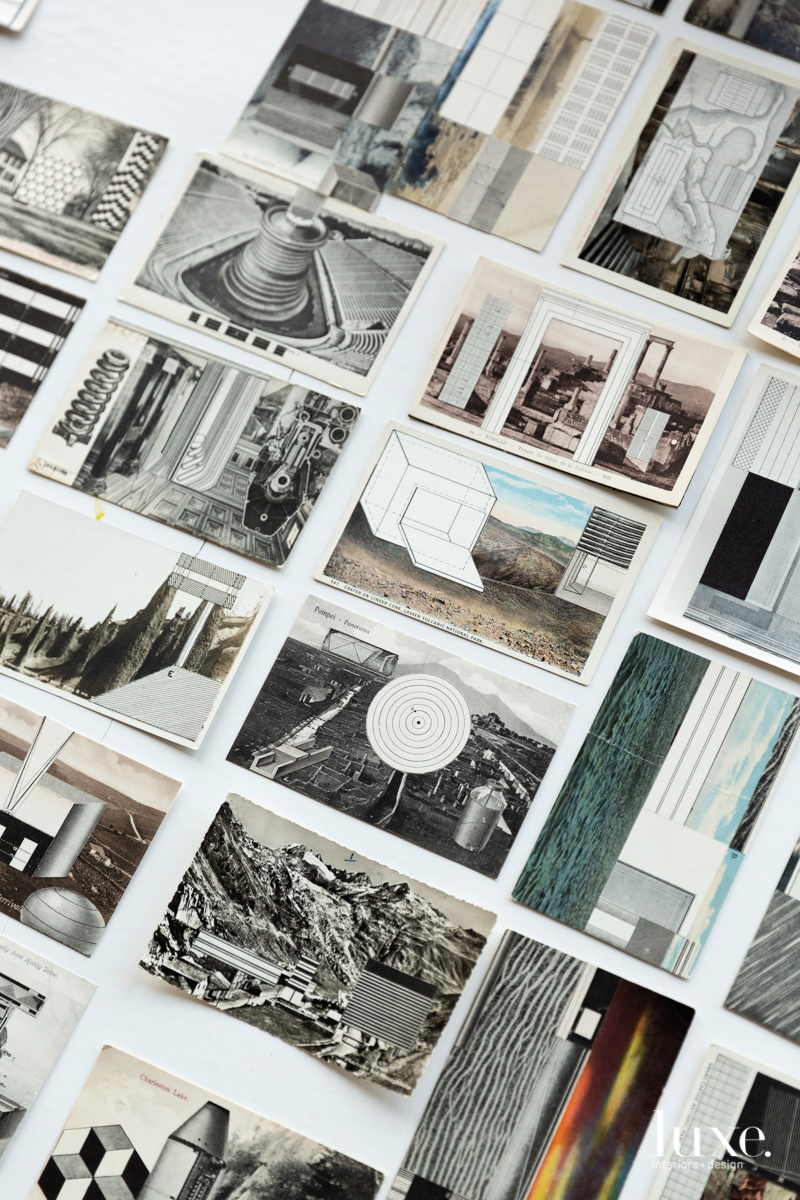
A collection of small works by Brown.

A collection of small works by Brown.
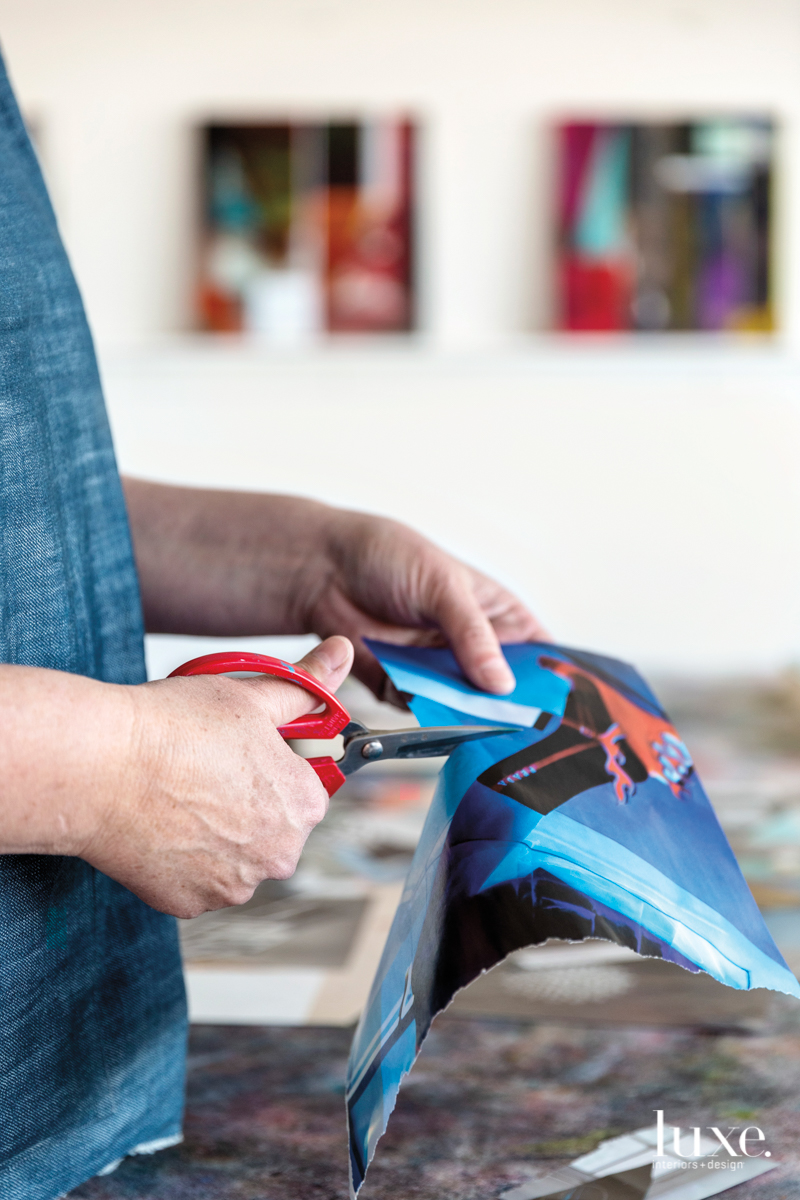
The artist uses scissors to excise images from magazines.

The artist uses scissors to excise images from magazines.
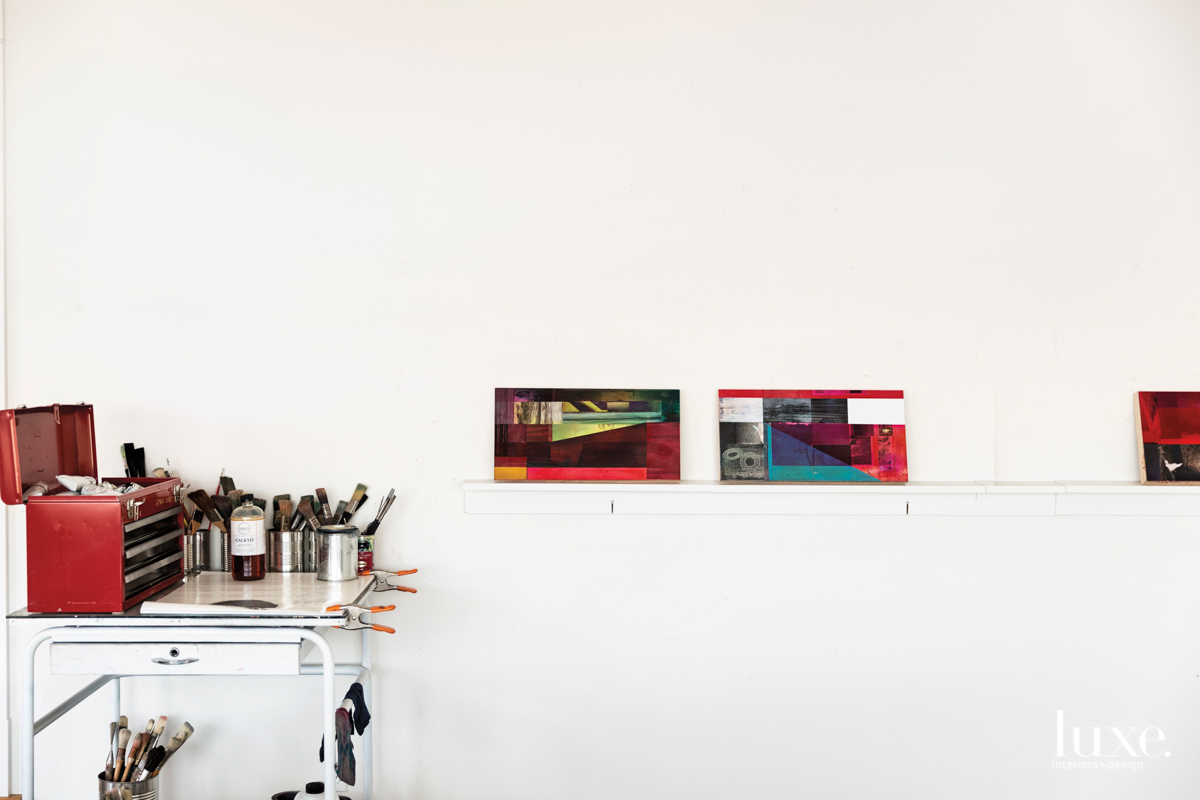
Art work and tools of the trade make a splash in Brown's white-walled studio.

Art work and tools of the trade make a splash in Brown's white-walled studio.
For her mixed-media paintings, Brown starts by excising images from their origins with an X-Acto knife, scissors or simply tearing them away specifically to achieve the rupturing effect that a tattered edge has against more precise lines and shapes. She then adheres them to a wood panel with a Japanese wheat paste called Jin Shofu, a substance often used in the repair of archival papers. After smoothing and burnishing the images with a cloth and small squeegee, the artist allows the collage to dry before layering on more color by using thin washes or opaque sections of oil paint, slowly creating singular shades. At this point, Brown begins to undo her efforts by sanding or scraping down parts of the artwork. “I like to see its archaeology,” says the artist. “Revealing the history of those layers is a big part of my process.” She then draws on the painting using graphite or ink.
The final painting always surprises Brown; in fact, she doesn’t consider it finished until she sees something new and exciting in it. “I never have a preconceived notion of what a painting is going to look like,” says the artist, whose work is carried at Michael Warren Contemporary in Denver. “I’m looking for opportunities and directions while I’m working, so there’s a lot of intuition and chance driving the painting.”
The dissimilar collage of images, in various degrees of cloaking, contribute to an improvisational effect. But this spontaneity is confronted–perhaps even corralled–by the precise geometry that is foremost in the painting. Herein lies the real value of Brown’s work: an all-encompassing visual adventure. “Even though I’m taking images from media, I’m not making statements on fashion or politics or the environment,” she says. “Work like that is very much of the moment, but my work is about reflection of interior states of experience. The paintings provide an opportunity for pure observation. They will take you as far as you want to go with them.”

